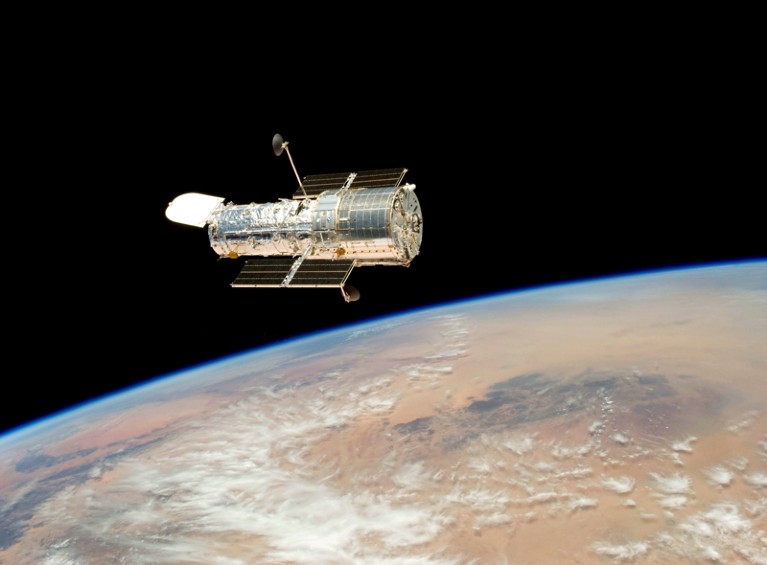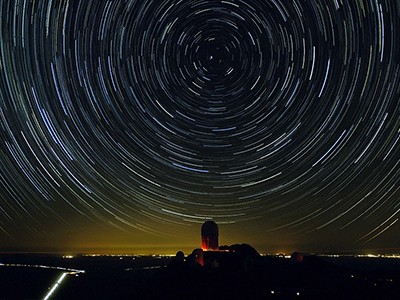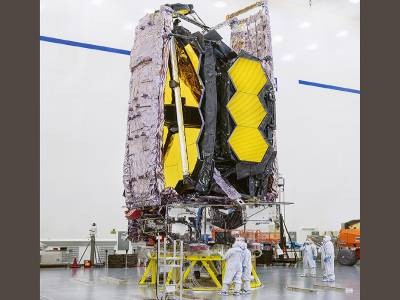
The Hubble Space Telescope, launched in 1990, was prioritized in the decadal survey released in 1972.Credit: NASA
Astronomers in the United States breathed a collective sigh of relief this month when a long-awaited, COVID-19-delayed, 615-page report finally landed on their desks. Issued by the National Academies of Sciences, Engineering, and Medicine, the ‘decadal survey’ of astronomy lays out a 10-year plan for the nation’s investments in astronomy and astrophysics, which run to more than US$2 billion annually.
The United States is the world’s largest funder of astronomy and astrophysics. This report — a massive three-year, grass-roots effort that incorporates hundreds of white papers from thousands of astronomers — is essential reading for astronomers everywhere. That’s because what the United States thinks and does has an impact on scientific priorities for other countries, whose astronomers are often very keen to work with the United States.
The decadal survey is officially a recommendation — but funding agencies generally follow its guidance. It is considered particularly important because, compared with other areas of science, astronomy and astrophysics needs very expensive research infrastructure. Both the Hubble Space Telescope and its successor, the engineering marvel known as the James Webb Space Telescope, were born from recommendations made in previous surveys. Webb’s 6.5-metre-wide mirror will enable astronomers to peer back to when the first stars and galaxies assembled in the Universe, more than 13 billion years ago.
US astronomy's 10-year plan is super-ambitious
But both missions are the result of extensive international collaboration. Hubble combines the forces of NASA and the European Space Agency (ESA). The $10-billion Webb is a collaboration between NASA, ESA and the Canadian Space Agency, and is scheduled to launch no earlier than 22 December. The next generation of telescopes will need to be similarly global affairs if they are to succeed.
The latest decadal survey makes it clear that the next decade’s priorities will include the search for habitable Earth-like worlds — and will require big facilities to pursue such themes. Those include a ‘super Hubble’ space telescope — estimated to cost at least $11 billion — and two enormous, 25–30-metre-wide ground-based telescopes that would be the successors to the current biggest class of telescopes, including the twin 10-metre Keck telescopes in Hawaii. Crucially, the report also identifies opportunities for the United States to coordinate with other nations and space agencies on astronomical exploration. These opportunities must be seized.
Plenty of scope
Collaboration comes in many flavours. Canada, China, India and Japan are partners in one of the next-generation ground-based telescopes, the Thirty Meter Telescope (TMT) project. They are contributing both funds and work on the telescope’s hardware. Canada, for example, is building the dome’s enclosure, and China is working on polishing mirror segments, in return for a share of future observing time.
Moreover, nations are keen to continue those collaborating roles. Last year, Canada’s astronomy community identified technical areas in which Canadian astronomers can complement the work of NASA and other large space agencies. These include the development of scientific instruments and other hardware for future NASA missions, in much the same way as the Canadian Space Agency contributed to Webb.
NASA won’t rename James Webb telescope — and astronomers are angry
Such collaboration also helps to ensure that research gaps are filled and that projects do not overlap or stray into the territory of others. Europe’s astronomers, for example, will be relieved that the proposed ‘super Hubble’ will operate in ultraviolet, visible and infrared wavelengths. Had the plan been to use X-rays, the telescope would have shouldered uncomfortably into the territory of ESA’s Athena X-ray observatory, which is scheduled for launch in the early 2030s. The report does propose an X-ray mission, but it is expected to follow the super Hubble and be designed in ways that would complement rather than compete with Athena. One challenge, however, will be to develop the super Hubble quickly and efficiently enough that it is possible to continue moving down the wish list towards that X-ray mission.
ESA, in turn, has worked hard to not duplicate future NASA missions. Earlier this year, Europe used its Voyage 2050 strategy process to identify science mission themes that stake out its own discovery space, such as exploring the icy moons of the outer Solar System, where life might reside in deep buried oceans. And the pan-European Astronet astronomy road-mapping process is similarly working to identify unique areas for discovery.
Global lifelines
There’s also much potential for collaboration with other nations. For instance, addition of an India-based detector to the Laser Interferometer Gravitational-Wave Observatory (LIGO) is currently approved in principle. If India were to grant full approval, then the new detector would work in concert with two existing LIGO detectors in the United States. Likewise, Japan, a world leader in X-ray astronomy, is heading up an X-ray mission that will launch next year, in collaboration with NASA, to keep discoveries flowing until Athena is ready for business.
On the US domestic front, the decadal report does not weigh in on the controversial topic of where to build the TMT. Construction of this facility on the mountain of Maunakea has been halted since 2015 because of concerns that it is being done on lands that many Native Hawaiians consider sacred. If the US federal government became involved, it would further prolong the project approvals process. The report recommends only that the National Science Foundation (NSF) consider funding both the TMT and a similar telescope in the Southern Hemisphere, the Giant Magellan Telescope under construction in Chile by partners in the United States, South Korea, Brazil, Australia and Israel. This arrangement would give US astronomers a chance to apply for a portion of observing time on these ground-breaking facilities, opening up public access to what have thus far been private projects.
Now that the latest decadal survey has been released, the funding agencies that commissioned the report — NASA, the NSF, the Department of Energy and the US Air Force — will begin implementing the recommendations, working with the US Congress, which will allocate the funds. As they do, they should consider how international partners can help with — and build on — the report’s powerful vision, so that the world can push the frontiers of discovery together.

 NASA won’t rename James Webb telescope — and astronomers are angry
NASA won’t rename James Webb telescope — and astronomers are angry
 How the fight over a Hawaii mega-telescope could change astronomy
How the fight over a Hawaii mega-telescope could change astronomy
 US astronomy's 10-year plan is super-ambitious
US astronomy's 10-year plan is super-ambitious
 Opponents of the Thirty Meter Telescope fight the process, not science
Opponents of the Thirty Meter Telescope fight the process, not science






